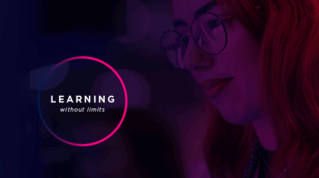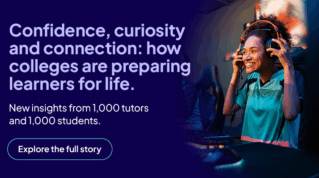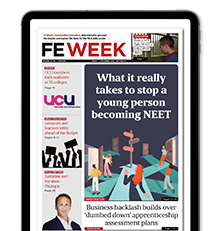When I was little and I wanted to know about Guy Fawkes or the Royal Family I would whip out my encyclopaedia and happily scour, pour and flick the pages, learning with each turn. Now I can shout into the ether and a smart device will answer my questions. Similarly when I was at school receiving careers advice, social media and AI automation roles hadn’t been conceived. That’s how fast the world has moved on. How might we as further education professionals prepare students for their futures when we cannot conceive what the world will look like in 20 years?
Rather than being daunted, let’s look to what we do know. Transferable skills will probably be involved. Communication will be key. The ability to navigate and curate this world will be needed. Likewise that resilience to adapt and change. Gone are the days of textbooks and encyclopaedia guiding paths. Learning can happen, anywhere, anytime. How might we harness the opportunities available, to maximise our learning time?
If I asked you now to answer some solving quadratics questions you might need to learn about quadratics before you begin. And what would that learning look like? Probably a YouTube video or a website? So much of the world’s learning exists online. Now let’s look to how we teach our subject, are we including these elements? Do we harness the power of video? What opportunities do students have to share opinions and communicate?
What if we taught students how to curate content and to identify what was good online? Resources exist to help us do this. My students enjoyed the free Common Sense Education post-16 lessons. The ‘Clicks for Cash’ lesson helped some students have that moment of realisation that not everything online is true. These lessons are planned, ready to go and free.
What if, with these new curation skills, students found a favourite TikTokker or YouTuber who explained things in a way that made it click just for them? What if students enjoyed learning solving quadratics on their phone on the bus on the way to college?
Rather than being daunted, let’s look to what we know
Our job has and is always to help students understand. I view this as including an understanding of how they learn, if we can prepare them to know what works for them, this can be transferred to their future careers and learning. You might be worried thinking, if they’ve mastered quadratics in a 10 minute video en route to campus, what purpose do we serve as teachers?
The answer is simple: We add the magic.
By flipping my maths class in this way, students arrived knowing our topic, with some ability to solve quadratics, and armed with questions about why sometimes you need the formula and sometimes you don’t. This meant we had rich discussions at a level we wouldn’t have had time to get to had we relied on me in class to do this and explain the basics. Students arriving with questions ready for us to have these discussions are the magic of teaching and learning for me.
We know that when students watch a video their knowledge increases but that this is where they begin their journey of understanding. As teachers we can help them practice, creating opportunities for them to thrive. We can offer feedback, guidance and help them develop that resilience to keep going. They can share their learning and communicate to peers in class too.
When teachers add the magic it shows that we are in this learning journey together. There is trust from us that learning will happen outside the classroom, that students will practice those curation skills that we taught them and won’t get lost online outside the classroom.
And in return, there is trust from the students that we will be there to help them make connections between the knowledge they have gained and that we will guide them so that they can go further.
And if they go further than any of us can imagine or conceive, then isn’t that magic?
This article is one of a number of contributions to The Staffroom from the authors of Great FE Teaching: Sharing Good Practice, edited by Samantha Jones and available from SAGE.











Your thoughts